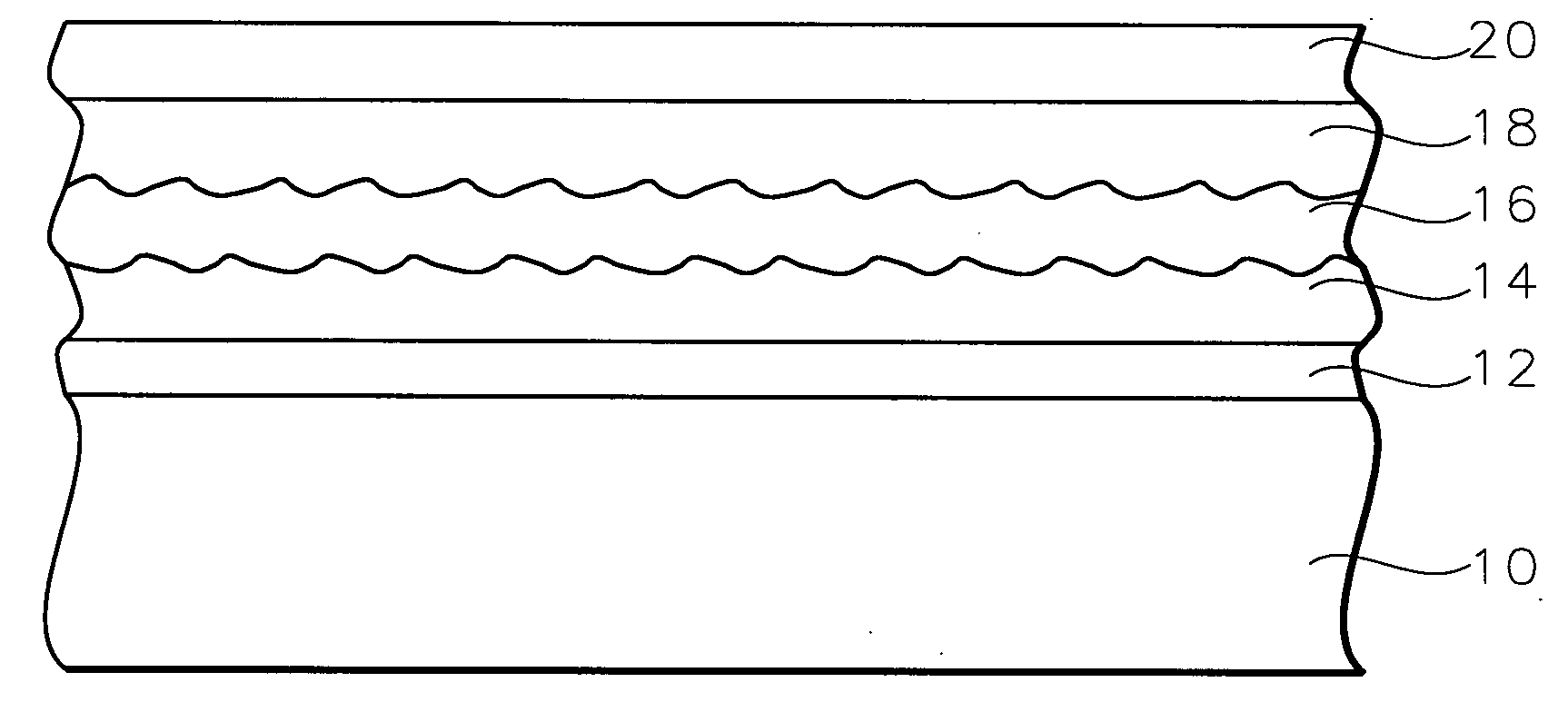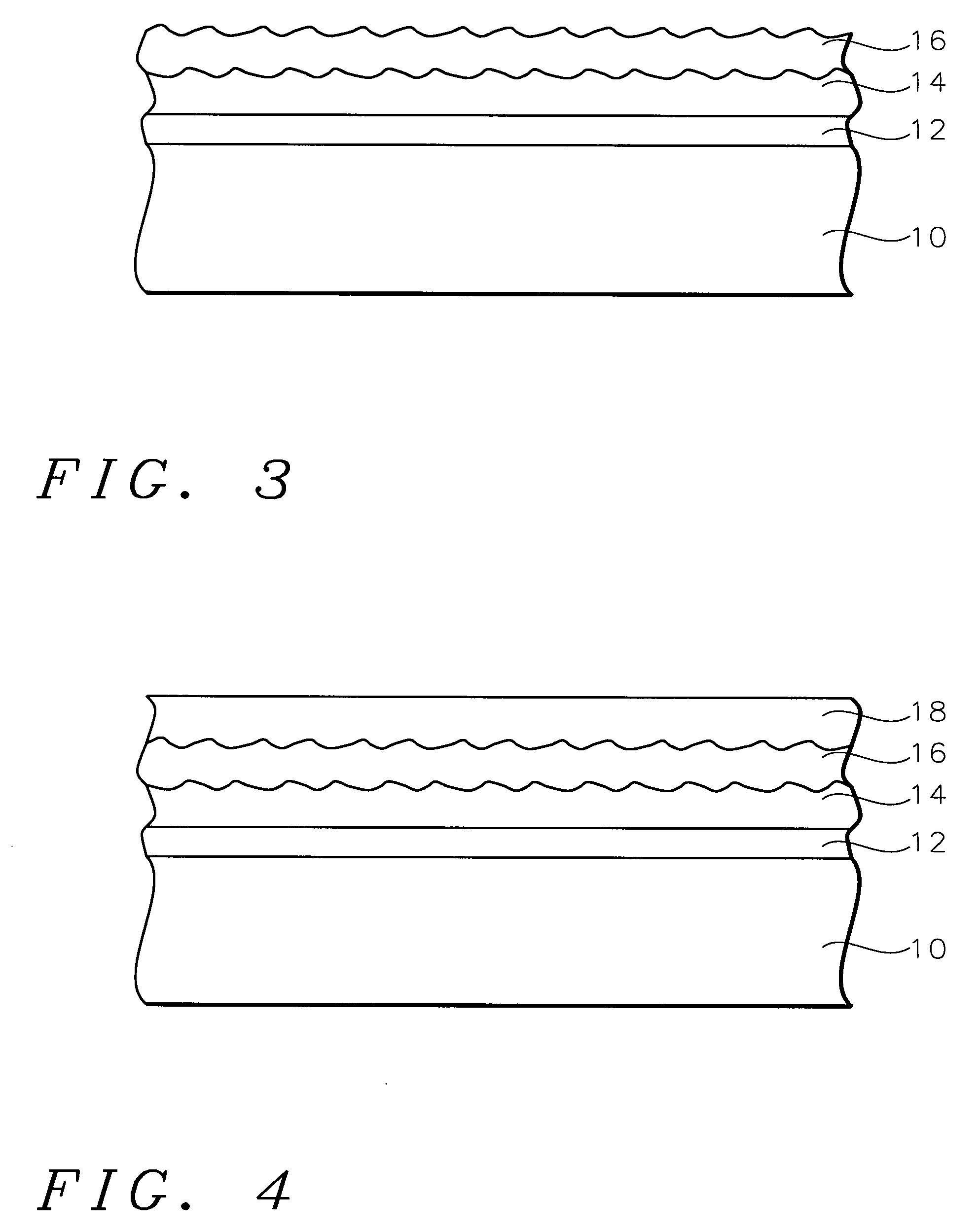Growth of indium gallium nitride (InGaN) on porous gallium nitride (GaN) template by metal-organic chemical vapor deposition (MOCVD)
a gallium nitride and gallium nitride technology, applied in the direction of crystal growth process, polycrystalline material growth, chemically reactive gas, etc., can solve the problems of low percentage of indium incorporation, phase separation, and impede the growth of indium-rich materials, so as to increase the incorporation
- Summary
- Abstract
- Description
- Claims
- Application Information
AI Technical Summary
Benefits of technology
Problems solved by technology
Method used
Image
Examples
Embodiment Construction
[0021]The conventional method of InGaN growth is as follows: first, a low-temperature nucleation layer is grown, followed by growth of a high-temperature GaN layer, with the former usually performed in the range of 450° C. to 600° C., and the latter usually performed in the range of 900° C. to 1100° C., most typically at about 1015° C. to 1030° C. The temperature is next lowered to about 700° C. to 800° C. to grow the InGaN layer.
[0022]According to the invention, it has been found that the main-peak of room temperature photoluminescence from the InxGa1-xN layer is 575 nm with a spectral broadening extending from 480 nm to 720 nm. It shows a significant red-shift and enhancement of intensity as compared to the emission of a InxGa1-xN layer grown by the conventional method with the same growth conditions (including TMIn and TMGa flows, growth temperature, and pressure).
[0023]The porous GaN layer of the present invention acting as the growth template is very important for the quality o...
PUM
| Property | Measurement | Unit |
|---|---|---|
| temperature | aaaaa | aaaaa |
| temperature | aaaaa | aaaaa |
| temperature | aaaaa | aaaaa |
Abstract
Description
Claims
Application Information
 Login to View More
Login to View More - R&D
- Intellectual Property
- Life Sciences
- Materials
- Tech Scout
- Unparalleled Data Quality
- Higher Quality Content
- 60% Fewer Hallucinations
Browse by: Latest US Patents, China's latest patents, Technical Efficacy Thesaurus, Application Domain, Technology Topic, Popular Technical Reports.
© 2025 PatSnap. All rights reserved.Legal|Privacy policy|Modern Slavery Act Transparency Statement|Sitemap|About US| Contact US: help@patsnap.com



